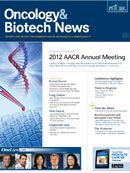Another Bite of the Immunotherapy Apple
In the past few years the pace of discovery of effective immunotherapies has accelerated as a consequence of better chemistry and understanding of immune biology.
Andrew L. Pecora, MD
Editor-in-Chief
Oncology & Biotech News
Chief Innovations Officer, Professor, and Vice President of Cancer Services John Theurer Cancer Center at Hackensack University Medical Center
Centuries of anecdotal observations of seemingly spontaneous regression of malignant growths coincident with an active infection led many to believe that the human immune system might be capable of eliminating cancer. In the late 1800s, surgeon William Coley, MD, pioneered the first man-made immunotherapy. Motivated when one of his patients died of sarcoma, Coley developed an immune-toxin consisting of a mixture of two species of bacteria (Streptococcus pyogenes and Serratia marcescens) intended to stimulate an antitumor response. Surprisingly, the toxin is still being studied today in clinical trials.
A follow-on to Coley’s concept was the successful deployment of Bacillus Calmette-Guérin (BCG). An attenuated strain of Myocobacterium bovis, BCG was first used in humans in 1921 to prevent tuberculosis. Decades later in the 1980s, it was developed as a topical cancer immunotherapy with great effect, particularly in superficial bladder cancer.
The next major advance in harnessing the immune system to kill cancer also occurred in the 1980s, with the development of a targeted monoclonal antibody, rituximab (Rituxan, Genentech), and the recognition that T cells could be expanded ex vivo and administered with anticancer effects. Rituximab, which acts against the CD20 antigen expressed by most malignant B cells, was shown to dramatically improve overall survival when combined with standard chemotherapy in treating diffuse large B-cell lymphoma. Subsequently, indications for this form of immunotherapy—one that works directly through inducing apoptosis and indirectly through antibody-dependant, cell-mediated cytotoxicity— have expanded broadly and crossed over to autoimmune disease.
As mentioned, contemporaneously with the development of Rituxan, Steven Rosenberg, MD, PhD, and colleagues were among the first to demonstrate that autologous T cells could be expanded, reinfused, and subsequently induce long-term remissions and cures of otherwise lethal cancers.
In the 1990s, another form of T-cell therapy, donor lymphocyte infusion to treat relapse after allogeneic transplantation, was found to be effective in some patients. Additionally, agents that stimulate T cells, including interleukin 2 and interferon alfa, were developed in this period and added to the efficacy of administered T cells.
Despite all of these historical advances, the success of immunotherapies in cancer care has been limited by the ability of the tumor cells to thwart the immune response. In the past few years, however, the pace of discovery of effective immunotherapies has accelerated as a consequence of better chemistry and understanding of immune biology.
At the recent 2012 ASCO Annual Meeting, the antibody drug conjugate T-DM1, which combines the monoclonal antibody trastuzumab (Herceptin, Genentech) with emtansine (DM1), an anti-tubulin cytotoxic drug, was highlighted in the plenary session. The treatment has demonstrated efficacy in metastatic breast cancer patients after the failure of trastuzumab. Treatment with antibody drug conjugates, such as T-DM1, has been made possible due to improvements in linkage chemistry.
Two agents that work by “turning off the off switch” on T cells able to kill tumor cells are also now making major news. A study reported at ASCO presented the results of using an antibody directed against the programmed cell death receptor-1 antigen. This T cell off switch is triggered by the PD-1 ligand that resides on tumor cells. Response rates of 18% to 28% have been observed in several solid tumors (lung, melanoma, renal). This activity is much higher than the usual 10% response rates associated with T-cell— based immune therapies.
The other “off switch” treatment that has been making waves is ipilimumab (Yervoy), an antibody directed against the protein CTLA-4, a T-cell off switch. Yervoy is now approved for treating metastatic melanoma.
Finally, the use of human dendritic cells to guide T-cell responses against tumor antigens has found its way into the new immunotherapy treatment arsenal, with treatments such as sipuleucel-T (Provenge).
Coley was prescient and like most first movers, experienced only modest success. However, the dream of using our own immunity to ward off cancer is no less plausible now than the idea of using attenuated infectious agents to prevent infectious diseases was when Coley was practicing medicine.




